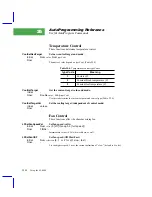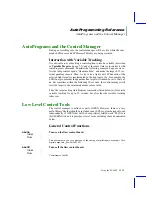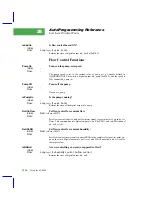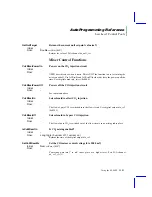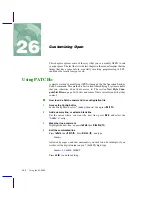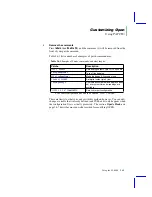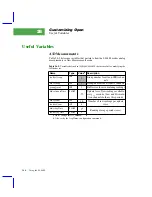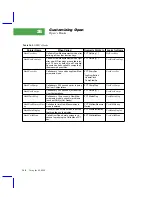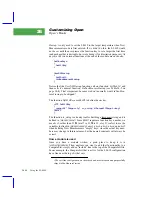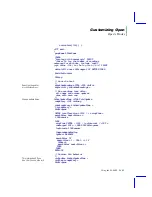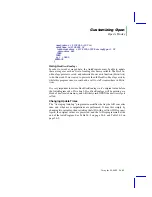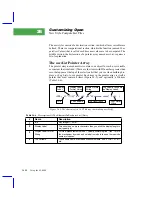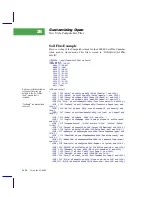
Customizing Open
OpenÕs Hooks
Using the LI-6400
26-7
OpenÕs Hooks
OPEN provides extended control to users via a series of hooks. What is a
hook? Suppose that you want the LI-6400 to print a CO
2
value to the RS-232
port (or any other task) every 1 second while in New Measurements mode.
Happily, there are some things that OPEN has to do every second, and so
there is a function that is called with that frequency. Happier still, you can
substitute your own function for it. This ability to substitute at strategic points
is what hooks provide.
There are two approaches to take to make use of a hook.
1
Add a function with a ÒspecialÓ name to a ComputeList.
The safest way to take advantage of OPENÕs hooks is put one or more
:include
fileName
directive(s) into your ComputeList file that will link module(s) containing
functions to do the activities that you want. The names of these functions are
very important, and Table 26-5 lists the required name along with what the
default actions are.
Before a ComputeList is processed, all of these hooks are reset to default val-
ues (thatÕs what makes this safe). Once a ComputeList is implemented,
OPEN looks for functions in the ComputeList module whose names match
the hook names. Each one found is substituted for the default function.
2
Direct pointer manipulation
A second method of using these hooks is to manipulate the hook directly, by
reassigning the pointer associated with the hook. The relevant pointer names
are also shown in Table 26-5.
Summary of Contents for LI-6400
Page 1: ...Using the LI 6400 Portable Photosynthesis System ...
Page 15: ...Part I The Basics ...
Page 16: ......
Page 174: ...Making Measurements Answers to Questions 4 56 Using the LI 6400 4 ...
Page 175: ...Part II Useful Details ...
Page 176: ......
Page 200: ...Standard Tools Power ON Hooks 5 24 Using the LI 6400 5 ...
Page 214: ...Real Time Data Real Time Graphics 6 14 Using the LI 6400 6 ...
Page 234: ...Environmental Control Light Control 7 20 Using the LI 6400 7 ...
Page 244: ...Light Sensor Considerations Gallium Arsenide Phosphide GaAsP Sensor 8 10 Using the LI 6400 8 ...
Page 288: ...Data Logging Making Your Own AutoPrograms 9 44 Using the LI 6400 9 ...
Page 289: ...Part III Working With Files ...
Page 290: ......
Page 312: ...The LPL File System Troubleshooting 10 22 Using the LI 6400 10 ...
Page 340: ...Downloading Files Using a Data Capture Program 11 28 Using the LI 6400 11 ...
Page 375: ...Part IV Configuration Issues ...
Page 376: ......
Page 420: ...Defining User Variables Old Style vs New Style 15 18 Using the LI 6400 15 ...
Page 454: ...Using an Energy Balance Further Reading 17 12 Using the LI 6400 17 ...
Page 455: ...Part V Maintenance Troubleshooting ...
Page 456: ......
Page 572: ...Troubleshooting Useful Information 20 46 Using the LI 6400 20 ...
Page 593: ...Part VI Programming ...
Page 594: ......
Page 622: ...Programming with LPL Compiler Directives 22 28 Using the LI 6400 22 ...
Page 846: ...Index I 16 Using the LI 6400 ...


